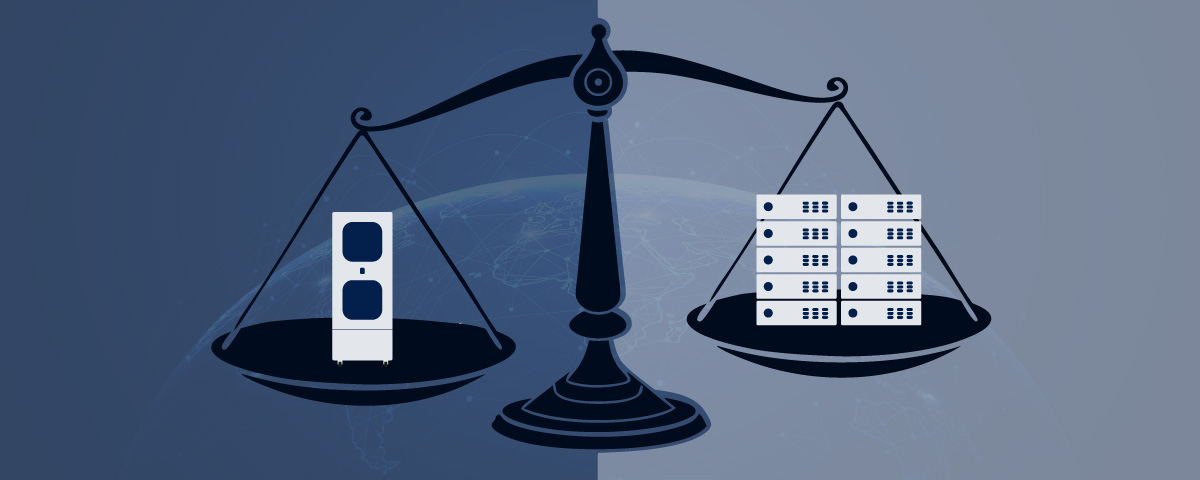In today’s digital landscape, the exponential growth of enterprise-generated data has led to a significant shift in data handling and processing. Traditional data centres and cloud solutions are no longer capable of accommodating the sheer volume of data generated by businesses. According to Gartner, by the year 2025, over 75% of enterprise-generated data will be created and processed outside the confines of traditional data centres or the cloud. This transformative shift has given rise to the concept of edge computing and the emergence of edge data centres. In this blog post, we will delve into the world of edge computing, exploring its definition, significance, and the driving forces behind its rapid growth.
Defining the ‘edge’
Although edge computing has been around for several years, the term ‘edge’ itself can be subjective. To provide clarity, we’ll define edge as computing that takes place at or near the source of the data. In other words, instead of transporting data to a centralised cloud server, edge computing enables processing and storage at the local level. Edge data centres play a crucial role in this ecosystem by providing cloud-like capabilities but with significantly lower latency and data transport costs due to their proximity to end users.
The role of edge computing in digital growth
The proliferation of edge computing can be attributed to the expanding and emerging applications that demand local data processing. These applications include:
- Online Shopping – With the ever-increasing popularity of e-commerce, edge computing allows for real-time inventory management, personalised recommendations, and faster transaction processing.
- 5G – The advent of 5G technology necessitates edge computing to handle the massive influx of data and provide low-latency connectivity required for applications such as autonomous vehicles and smart cities.
- Internet of Things (IoT) – The vast number of IoT devices generate copious amounts of data, making it impractical to transmit all of it to centralised servers. Edge computing enables real-time analytics and decision-making at the device level.
- Blockchain – Distributed ledger technology like blockchain benefits from edge computing by ensuring faster and more secure transactions while minimising the dependency on centralised systems.
- Artificial Intelligence (AI) – AI applications, such as computer vision and natural language processing, require instantaneous data processing and analysis. Edge computing enables AI models to operate in real-time, enhancing responsiveness and efficiency.
- Remote Learning – The shift towards remote learning has created a need for low-latency interactions between students and online platforms, which can be facilitated through edge computing.
- Streaming – The growing demand for video streaming and video conferencing services relies on edge computing to reduce latency, enhance quality, and deliver an uninterrupted user experience.
- Telemedicine – Edge computing enables remote patient monitoring, real-time data analysis, and efficient communication between healthcare providers, improving the accessibility and quality of healthcare services.
The growth of edge computing
The growth of edge computing can be attributed to the sheer volume and density of data generated by modern applications. As data sets become larger and heavier, it becomes increasingly impractical to transport them to centralised cloud data centres. Processing and storing data locally at the edge, where it originates, offer significant advantages in terms of reduced latency and cost-effectiveness.
This shift towards edge computing will result in a proliferation of edge data centres. These centres will work in tandem with large cloud data centres, forming the foundation for IT processing and storage. Together, they will create a hybrid computing infrastructure that optimises data handling based on proximity and application requirements.
Conclusion
Edge computing is transforming the way enterprise-generated data is handled and processed. The rapid growth of edge computing is driven by the need for local processing of data sets that are too large or latency-sensitive to be transmitted to centralised cloud.
Incorporate the edge advantage into your data strategy today with our state-of-the-art indoor and outdoor micro data centres. Reach out to us now to embark on your journey of unleashing the full potential of edge computing.






